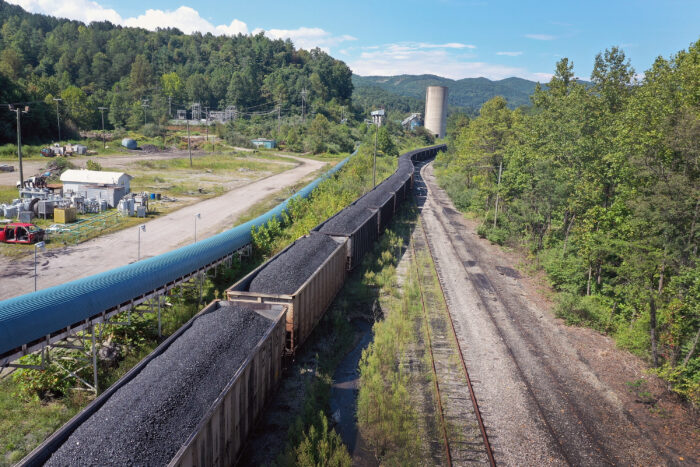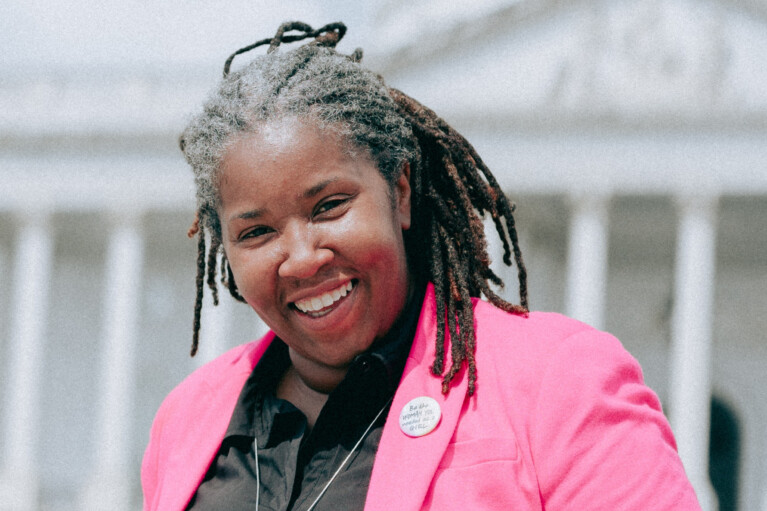Lawmakers, advocates still scrambling for climate funding with deadlines looming

Del. Dana Stein (D-Baltimore County) was one of the major architects of the Climate Solutions Now Act of 2022, which was meant to guide the state’s response to climate change.
Now, one of Stein’s bills is seen by some colleagues and environmental advocates as a preferred vehicle for funding some of the state’s ambitious climate goals.
But it isn’t clear yet whether leaders of the General Assembly or Gov. Wes Moore (D) are prepared to embrace any measure to generate revenues to pay for the Moore administration’s multibillion-dollar climate plan during this legislative session. With just over a month left — and 10 days until the March 18 “crossover” deadline for bills to get out of one legislative chamber and be guaranteed consideration in the other — the conversation in Annapolis over paying for climate programs is increasingly tied to the broader debate over the state budget and raising revenues.
“It does not seem to be a revenue year,” said Kim Coble, executive director of the Maryland League of Conservation Voters and co-chair of the Maryland Commission on Climate Change.
Nevertheless, Coble — Moore’s closest ally among state environmental leaders — is pushing policymakers to adopt House Bill 1008, a bill from Stein that would impose a fee on companies that transport fossil fuels through Maryland and would especially target companies that transport coal by train.
Fiscal analysts estimate that such a fee would generate between $275 million and $300 million a year.
“They would be used to support activities that reduce greenhouse gas emissions,” Stein told the House Environment and Transportation Committee during a hearing on the bill last week.
Specifically, the legislation calls for creation of a fossil fuel mitigation fund within the Maryland Department of the Environment (MDE) with the revenues from the new fee. About two-thirds of the funds, Stein said, would come from out-of-state companies that transport fossil fuels through Maryland.
The new fund would be similar to the Maryland Oil Disaster Containment, Clean-up and Contingency Fund, which was established in 1986 to provide funding to MDE’s oil pollution prevention programs, such as permitting, enforcement, and oil spill response. That money comes from fees imposed on each barrel of oil transferred into the state.
Jamie DeMarco, Maryland director for the Chesapeake Climate Action Network, said coal trains are especially harmful to public health because the train cars that carry the loads are generally left uncovered for safety reasons, and coal dust is spread throughout the communities the trains pass through.
“Maryland should be compensated for the transport of these toxic materials,” he said.
While environmental advocates have widely praised the Moore administration’s climate plan, which MDE released in late December with an estimated price tag of more than $10 billion, they have become increasingly distressed over the lack of funding being immediately made available to implement it.
Earlier this year, Moore announced that he was making $90 million available as a “downpayment” on the climate plan.
It’s not a new pot of revenue, however. The money will come from Maryland’s Strategic Energy Investment Fund, which is replenished with revenue from quarterly pollution credit auctions that the state collects through the Regional Greenhouse Gas Initiative. That fund is generally used to provide clean energy grants throughout the state.
Previously, the $90 million had been held as a cushion to guard against lower than expected proceeds from carbon credit sales and the costs of administering the energy investment fund. Now, about $50 million, will go toward decarbonizing community buildings like hospitals, multifamily housing and schools, while $23 million will be set aside for electric-vehicle charging stations in low- and middle-income neighborhoods and $17 million is devoted to building up a fleet of electric school buses for public schools.
“We were very pleased with the downpayment the governor has made of $90 million,” Coble testified during the House hearing on Stein’s coal train bill. “But that’s not enough. And that’s a one-year investment. What we need is a long-term funding source and we feel like this is a strong candidate for that role, bringing in $300 million a year.”
Stein’s bill isn’t the only legislative proposal to boost funding for climate programs. Throughout the legislative session, there has been a high-pressure campaign waged on behalf of the RENEW Act, which would seek to recover compensatory payments from fossil fuel companies for climate damage and environmental degradation in the state. The House version of the bill was heard Thursday in the Economic Matters Committee, following a rally by environmentalists.
The Chesapeake Climate Action Network (CCAN) has become especially aggressive in its advocacy, issuing an email Thursday with the subject line, “Where is Gov. Moore?” Supporters of the RENEW Act believe it can generate about $900 million a year, and they argue that the millions of dollars in annual costs for cleanup and mitigation required from climate damage amounts to a high tax on residents.
“Every year we don’t pass this bill, it’s a fact that we’re raising taxes on Marylanders who did nothing to create this problem,” said Mike Tidwell, CCAN’s executive director.
And for colleagues who fret that the legislation amounts to a tax increase, one of the RENEW Act sponsors, Sen. Katie Fry Hester (D-Howard and Montgomery), pointed to similar federal legislation sponsored by one of Maryland’s U.S. senators, Chris Van Hollen (D).
“One of the strongest endorsers we have is Sen. Van Hollen,” she said.
Expanding RGGI
Meanwhile, the House Economic Matters Committee heard another bill from Stein Thursday that is designed to raise revenue for climate programs. HB 1272 would require the Department of the Environment and the Maryland Commission on Climate Change to develop a cap-and-invest program to reduce greenhouse gas emissions. The state already receives revenues of this type through the Regional Greenhouse Gas Initiative (RGGI), which sells carbon credits to operators of power plants.
Stein said his bill would extend the concept to become “an economy-wide carbon reduction program,” raising revenues from other sectors that produce carbon emissions. He noted that California and Washington state have similar programs in place, while New York is developing one.
Stein’s two bills do not have Senate equivalents, which could become a factor in whether the House chooses to move them.
Asked whether legislative leaders have an appetite for embracing any of these revenue-generating measures this year, House Environment and Transportation Committee Chair Marc Korman (D-Montgomery) asserted that such “novel proposals” may take time for lawmakers to digest.
“These things are new to Maryland and there are a lot of details to work out,” he said.
The Moore administration has sent representatives to hearings on the RENEW Act and Stein’s bills, but has not weighed in on them. A spokesperson, Carter Elliott IV, suggested the administration would wait to see what transpires in the weeks ahead.
“The governor looks forward to reviewing legislation that passes through the state legislature this session,” he said in an email. “When bills hit his desk he will thoroughly review them all to ensure that the Moore-Miller Administration is enacting legislation that is in the best interest of all Marylanders.”
Elliott reiterated that Moore realizes the state will have to generate more funding to meet the requirements of the Climate Solutions Now Act.
“While he knows that $90 million won’t solve our climate challenges in Maryland he is clear that this is an important downpayment on a more sustainable future, one where the air is cleaner, where our energy grid is more resilient, and where power is drawn from nature, instead of being in conflict with it,” Elliott said.
Stein, who is in his 19th year in the General Assembly and often has a keen sense of where a legislative debate is headed, said in an interview he wasn’t sure whether these particular climate bills have a shot this year.
“I just know they’re under consideration,” he said. “Whether they’re going to move or not, I just know they’re part of the mix.”




 Creative Commons Attribution
Creative Commons Attribution